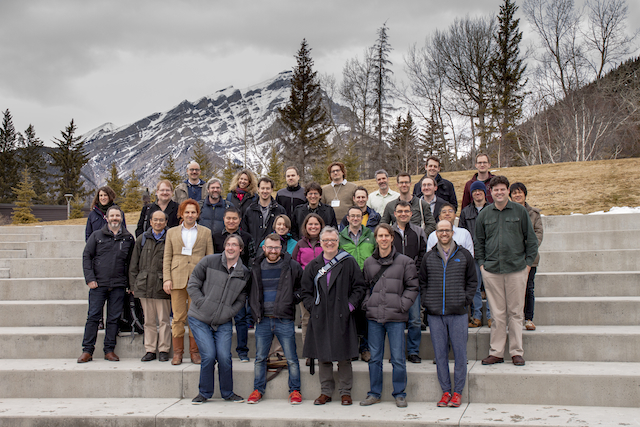Homological Mirror Geometry (16w5062)
Organizers
David Favero (University of Alberta)
Matthew Ballard (University of South Carolina)
Colin Diemer (University of Miami)
Description
The Banff International Research Station will host the "Homological Mirror Geometry" workshop from March 6th to March 11th, 2016.
Mirror symmetry, as originally conceived by physicists in the 80's, relates pairs of distinct (Calabi-Yau) manifolds by identifying the seemingly disparate features of the algebraic geometry of one with the symplectic geometry of the other. Since their introduction, conjectures stemming from mirror symmetry have been a continual source of fascination for mathematicians due to the indirect nature of the relationship: the precise underlying mathematical structures indentified under mirror symmetry are often of very different nature, supplying a deep, and often mysterious, duality.
Birational geometry, on the other hand, is one of the most classical areas of algebraic geometry, with foundations dating back at least to the late 1800's. Birational geometry aims to classify the fundamental objects of algebraic geometry by understanding their ``generic" behavior. Guided over the decades by luminaries such as Zariski, Kodaira, and Hironaka, it has evolved into one of the richest theories in modern algebraic geometry. In recent years, efforts by several research groups have elucidated several concrete ways in which the birational theory of varieties can be interpreted in terms of mirror symmetry constructions, yielding intriguing new perspectives on classical geometric themes.
This workshop seeks to capitalize on the developing momentum which lies at the intersection of these two subjects.
The Banff International Research Station for Mathematical Innovation and Discovery (BIRS) is a collaborative Canada-US-Mexico venture that provides
an environment for creative interaction as well as the exchange of ideas, knowledge, and methods within the Mathematical Sciences, with related disc
iplines and with industry. The research station is located at The Banff Centre in Alberta and is supported by Canada's Natural Science and Engineeri
ng Research Council (NSERC), the U.S. National Science Foundation (NSF), Alberta's Advanced Education and Technology, and Mexico's Consejo Nacional
de Ciencia y Tecnología (CONACYT).






